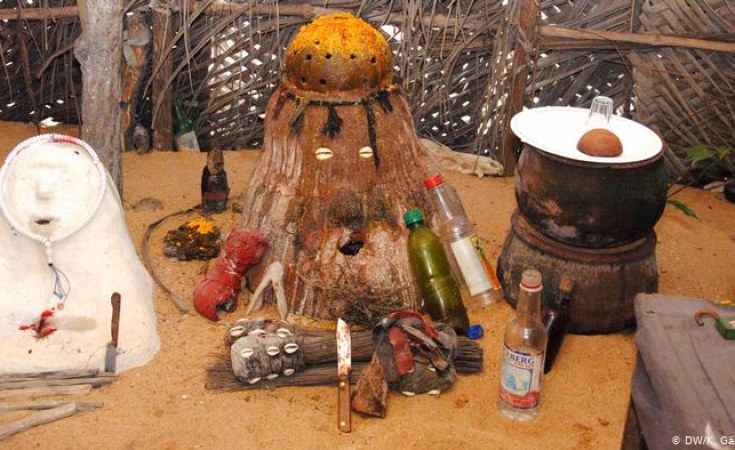Cape Town — Three new research papers have brought evidence that human evolution was a less linear process than previously theorised, according to Gizmodo's George Dvorsky. They also suggest evidence of "sister-species", relating to some ancient human species that partially contributed to the genetic makeup of modern humans.
The First Study
The first paper published by Nature and co-authored by Rainer Grün and Chris Stringer, from Griffith University in Australia and the Natural History Museum in London respectively, studied the Broken Hill skull. Discovered in a cave in Kabwe, Zambia in 1921 by Swiss miner Tom Zwiglaar, the study estimated the fossil to be 299,000 years old, 200,000 years less than the previous projection. According to the Smithsonian Institution, the skull is one of the oldest known to have tooth cavities. It also shows features similar to Homo erectus like large brow ridges and a bulge at the rear of the skull.
Several months after its initial discovery, the skull was examined by paleontologist Arthur Smith Woodward and classified as that of a new species, Homo rhodesiensis. It was later designated Homo heidelbergensis, now a synonym for the archaic human subspecies - H.heidelbergensis/rhodesiensis - that lived between 700,000 to 300,000 years ago, according to research by Italian paleontologist Giorgio Manzi.
The newly estimated age of the skull is owed to the lack of sedimentary material from its original site; the Smithsonian Institution estimated an age of between 125,000 and 300,000 years based on animal fossils collected from the site. According to Stringer, a "thin material coating", that consisted of material scraped off the skull years ago before being misplaced and re-discovered in the London Natural History Museum's mineralogy collection. The researchers also used direct uranium series dating, a method used since the 1970s to determine the age of calcium carbonate materials like coral.
Further, an age of nearly 300,000 years would suggest that H.heidelbergensis/rhodesiensis was the last common ancestor of Neanderthals and modern humans as it was around that time that Homo sapiens first emerged. Further, the Natural History of London released a press statement describing the presence of several human species existing simultaneously: "It is now looking like Africa and Eurasia were inhabited by a whole range of hominin species just a few hundred thousand years ago.
While H. naledi was living in South Africa, H. heidelbergensis was surviving in South-Central Africa, and H. sapiens was emerging in Morocco and Ethiopia. At the same time as all this, H. neanderthalensis was evolving in Europe, the Denisovans were developing in Asia, H. erectus may still have been clinging on in Indonesia, and two diminutive hominins, H. floresiensis and H. luzonensis, were living the island life in Southeast Asia."
Paleoanthropologist Katerina Harvati from Eberhard Karls University of Tübingen offered insight into the research and said it was "consistent with the emerging picture from the fossil record and from paleogenetics that several species coexisted for a long time across the vast expanse of the African continent, variously contributing to the origins of modern humans, not only directly as ancestral populations, but also through interbreeding with surviving archaic human species."
The Second Study
The second research article, also published in Nature, centered on another ancient human subspecies: Homo antecessor. Estimated to have lived between 2.5 million and 770,000 years ago during the Early Stone Age, H.antecessor is a close relative of neanderthals and modern humans and was known to have been present in Western Europe.
Through the use of protein analysis - specifically, a scan of dental enamel from an H.antecessor specimen estimated to be between 949,000 and 772,000 years old - researchers found that the facial features of H.antecessor were retained in Neanderthals as well as modern humans. José María Bermúdez de Castro, a co-author of the study and a researcher at University College London, said in a press release that the new study "provides evidence that the H.antecessor species may be closely related to the last common ancestor of Homo sapiens, Neanderthals, and Denisovans", adding that facial features shared between the hominins were "clearly appeared much earlier than previously thought".
The Third Study
The third study by Debra Bolter from Modesto Junior College in California and published by PLOS One was based on research into the partial skeleton of a juvenile Homo naledi specimen. H.naledi was an archaic human subspecies discovered in South Africa in 2013.
The specimen, named DH7, was found in the Dinaledi Chamber of the Rising Star Cave System in South Africa where several fossils of the hominin species were also discovered. Analysis of DH7, which comprised several teeth and some arm and leg bones, showed a mix of growth patterns also found in early modern humans as well as archaic hominins. Further study is required to determine the age of death along with matching bones with teeth in order to determine the rate of growth.
Speaking to Gizmodo, Bolter said: "Immature remains are critical for understanding how an extinct species matured," explained Bolter in an email to Gizmodo. "Partial immature skeletons reveal the combination of baby and adult teeth, and the timing of their eruptions with the skeletal fusion of growth plates in the long bones and pelvis of the body. By studying these growth patterns and comparing them to other extinct species, scientists can reconstruct the evolutionary pressures that led to certain adaptations, along with changes to our own species' developmental processes."


